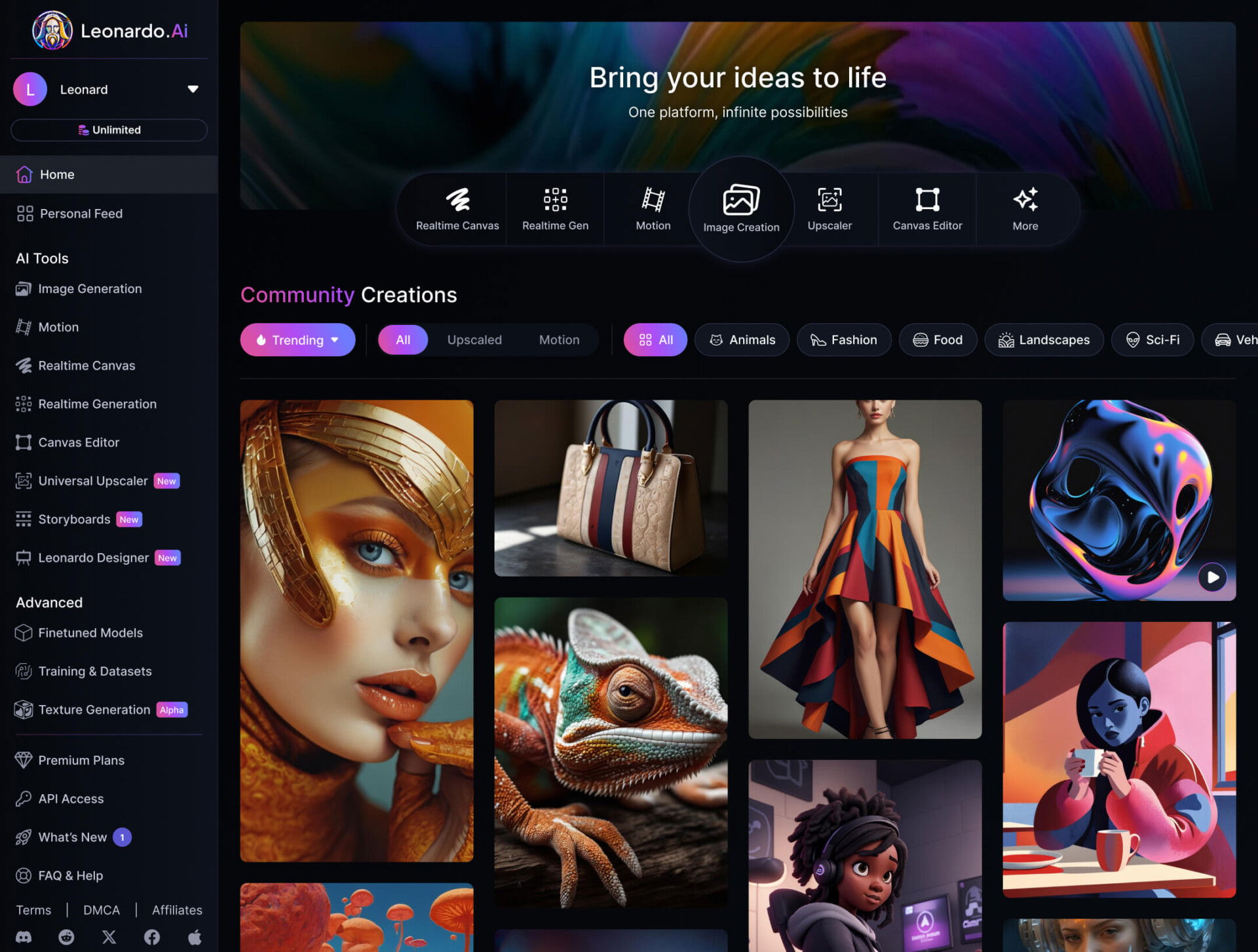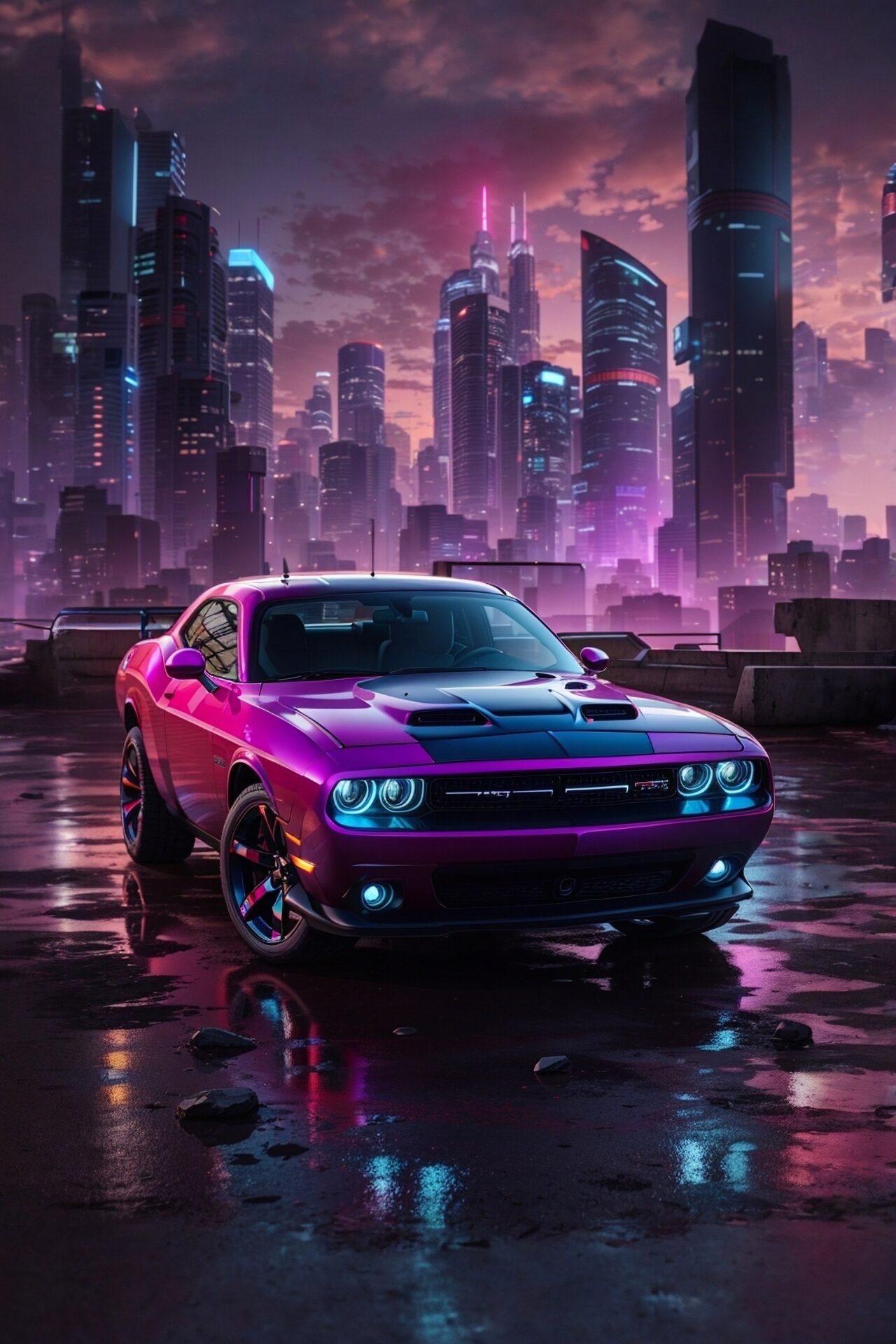One of the emerging platforms that is rewriting the concept of creative AI is Leonardo AI, a system designed to assist professionals and creatives in generating high-quality visual content using deep learning algorithms.
What is Leonardo AI?
Leonardo AI is an advanced artificial intelligence-based platform designed primarily for visual content generation. It is distinguished by its ability to produce high-definition images, 3D models, and other visual assets that find application in areas such as digital graphics, game design, advertising, and more.
The platforms main goal is to accelerate the creative process through artificial intelligence tools, enabling users to create detailed, customized images from simple textual descriptions (prompts) or existing datasets. Leonardo AI is based on an advanced neural network architecture, with machine learning techniques to continuously improve the quality and accuracy of generated content.

Leonardo AI offers a number of features that make it particularly attractive to those working in the digital creativity industry. Here are some of its main features:
- Image Generation on Demand
The platform allows users to create custom images simply by describing the desired image via text. This process, known as text-to-image generation, makes use of advanced language models such as Transformers, which understand the semantic context of the request to generate images that accurately reflect what is described. - 3D Resource Creation
Leonardo AI is also distinguished by its ability to generate 3D models that can be used in various domains, such as gaming and virtual reality. This feature significantly reduces the time to produce models, which would otherwise require hours of manual work. - Image Editing and Optimization
In addition to content creation, the platform offers tools to enhance or edit existing images. You can correct colors, add details, or even transform artistic styles to fit specific projects. - Use of Pre-Trained Templates
Leonardo AI is based on pre-trained models, which means that the artificial intelligence has already learned how to create high-quality visual content by analyzing millions of images. This makes the creation process very fast and efficient, with the ability to generate impressive results even with limited input. - Advanced Customization
One of the platforms most appreciated features is the ability to customize AI models to suit ones needs. Users can upload custom datasets to train the AI on specific styles, colors or details, thus ensuring that the final results are perfectly in line with their creative vision. - Integration with Other Tools
Leonardo AI is designed to be integrated with other visual development platforms, such as 3D modeling software or graphics editing tools. This integration allows creators to easily incorporate generated content into their existing workflows.
– YOU CAN ALSO CHECK OUR VIDEO TUTORIAL ABOUT LEONARDO AI –
Applications of Leonardo AI
Leonardo AI’s versatility makes it a valuable tool for a variety of creative fields. Some of the major applications include:
Game development
Game designers can use Leonardo AI to quickly create 3D environments, characters and objects, saving time and resources in the production phase.
Advertising design
Advertising agencies can leverage the platform to create unique and eye-catching promotional images, responding to specific creative briefs in reduced time.
Animation and film
Also in the entertainment industry, Leonardo AI offers tools for creating complex animations and digital environments.
Generative Art
Digital artists can use AI to explore new art forms, combining styles and techniques to generate innovative visual works.

How Does Leonardo AI Work?
Leonardo AI uses a combination of convolutional neural networks (CNNs) and advanced language models, such as Transformers, to interpret and generate content. CNNs are particularly effective in handling images, allowing the platform to analyze and understand visual details with great precision.
When a user enters a textual prompt, the system translates that input into a visual representation using pre-trained models. This process requires the analysis of billions of parameters to produce an image that meets the required specifications.
In addition, Leonardo AI uses machine learning algorithms to constantly improve the results. As users provide feedback on the generated content, the system learns and adapts, refining its generation capabilities.
Potentialities and Limitations
Leonardo AI undoubtedly has the potential to revolutionize the creative process in many areas, but it also has some limitations. Although the quality of the images generated is generally high, the system can sometimes produce less than perfect results, especially when dealing with very complex or detailed queries. Also, as with many other AI technologies, there is a risk of homogenization: when AI uses similar datasets, the generated content may lack originality or unique character.
Another challenge concerns intellectual property. With artificial intelligence creating content autonomously, questions arise about who owns the rights to the works created. The legal issues surrounding AI-driven content creation are still being worked out, but it is something for anyone using these platforms to consider.
Conclusions
Leonardo AI represents an important step toward integrating artificial intelligence into the creative world. With its ability to generate high-quality 3D images and models, this platform is opening up new possibilities for designers, artists, and developers. However, as with any technological tool, it is essential to understand both the benefits and limitations of AI to make the most of it.
As technology continues to evolve, Leonardo AI could become an even more powerful and flexible tool, capable of radically changing the way visual content is created and consumed.






